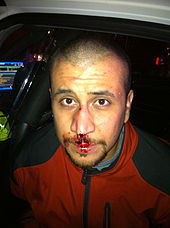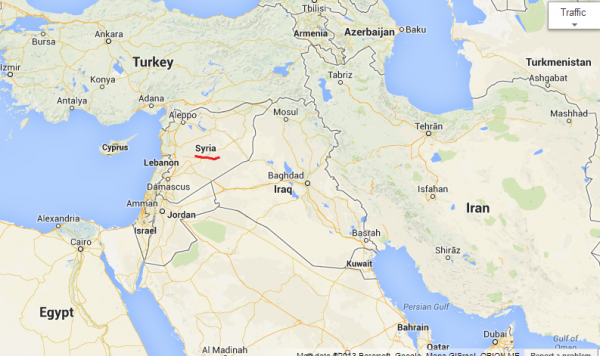When the verdict for the George Zimmerman trial came out several weeks ago on the killing of Trayvon Martin, I passionately hopped onto the bandwagon of anger and frustration. Previously, I had signed the petitions calling for federal investigation into the case, I was shocked at the backwardness of the Stand Your Ground law, and I was flabbergasted at how long it took for Zimmerman to be arrested in the first place.
At some point, I realized I knew very little about Zimmerman himself and about the trial other than the media’s short media segments. I did a little research and that research has led me to change my mind on the case and question the media’s biased handling of it. This is extremely controversial and puts me at odds with many progressives (a label I’m usually happy to associate with), but I feel it’s important to lay out some of the facts and context.

The picture of Zimmerman often used on TV is several years old, and he looks more thuggish and overweight than his current picture (seen further below when I discuss the actual confrontation of George and Trayvon). Trayvon is shown a few years younger as a super innocent looking kid. http://www.nbcmiami.com/news/local/Old-Photos-May-Have-Shaped-Public-Reaction-In-Trayvon-Martin-Case-145223895.html
First off, what do we know about Zimmerman before the shooting? Was he a racist bigot? I was at the 50th Anniversary of the March on Washington in which Martin Luther King, Jr. gave his “I Have a Dream” speech and there were many signs about Zimmerman saying he was.
We know that he was a leader/captain of the Neighborhood Watch for his neighborhood. What I didn’t see in TV media coverage was that there had been a string of thefts in his neighborhood, and that residents were concerned. As a leader of the Neighborhood Watch, it would make sense for him to keep an eye on things. And, a couple of years back, there was an incident where the son of a white policeman had beaten up a black homeless man and went largely unpunished because of his ties to the police establishment. There was a public meeting about the incident, which Zimmerman apparently put major effort into organizing and informing the black community about, and Zimmerman spoke boldly at it, criticizing the police and their actions in covering it up (accusing them of trying to be above the law). This leads me to think, no, he probably wasn’t a racist bigot.
In general, Zimmerman seemed to have a positive relationship with the police because he worked with them in conjunction with the Neighborhood Watch, sent them positive emails, and even received advice from them to “report suspicious persons”. I also don’t think he was so angry at the police that he felt he had to completely take matters into his own hands. He showed he could cooperate with them.
Zimmerman’s call to the police also provides insights. (This call and all of the 911 calls reporting the actual fight and gunshot are on the Wikipedia page. The page in general is excellent). In his call, Zimmerman is calm and collected. He expresses some frustration that the robbers in his neighborhood always get away (“these assholes always get away”) and didn’t say anything bad about black people. He only mentioned Trayvon’s skin color when asked, and responded very simply with “black” and had no malice or other intonations (that I heard…you can listen yourself). He also said that Trayvon was watching him and approaching him. Then Zimmerman says that Trayvon starts running, and you can hear Zimmerman get out of his car, and Zimmerman starts running as well. You hear noise and wind in the recording – which seems to correspond with Zimmerman running – and the dispatcher asks if he’s following the person. Zimmerman says yes, and the dispatcher says “Ok, we don’t need you to do that”. Zimmerman says “ok”. The noise/wind stops and Zimmerman catches his breath, with the dispatcher asking him more questions for another 90 seconds. It’s clear that Zimmerman isn’t pursuing Trayvon (there is no wind sound and his voice is just like at the beginning). The dispatcher says police are on the way, and Zimmerman asked that he be called directly by the arriving cop and the dispatcher said he had Zimmerman’s phone number and would make sure that happened. It is not proveable, but it seemed like Zimmerman was dutifully following the advice of the dispatcher and was waiting for the police officer to arrive.
As for what happened next, Zimmerman’s testimony was that he was returning to his vehicle when Trayvon approached him from the left rear (unseen), punched him in the face (knocking him down), then Trayvon got on top and began hitting him. But in media coverage of the case, it seemed like it was unclear who was on top. The evidence – no injuries on Trayvon other than the shot and a small slash on his knuckle consistent with hitting someone – and Zimmerman’s broken nose and gashes on the back of his head – to me shows that clearly Trayvon was on top.


George Zimmerman immediately after being taken in for questioning on the night of Trayvon Martin’s shooting. Notice also that he looks significantly older and slimmer than the previous picture which was mostly used on TV.
If Zimmerman instigated the confrontation, how would they even end up in a close-range fight on the ground with Trayvon on top, especially if Zimmerman could have drawn his gun before this happened? Zimmerman was bigger than Trayvon and had practiced mixed martial arts fighting (although he wasn’t very good at it: he started in 2010 mainly for weight loss and was successful in that regard) so overall I think it seems unlikely that Trayvon would end up on top with no injuries at all if Zimmerman was the person who started the fight. These to me show that he was taken by surprise by a punch to the face, which is consistent with the medical record and his story. Zimmerman also testified that he only went for his gun when Trayvon saw it and started to reach for it. Then all of a sudden the confrontation was of lethal proportions for Zimmerman and he grabbed his gun first and shot Trayvon. The sad thing is that without the gun present, the confrontation might have ended only with injuries (even if very serious ones) as opposed to death. (Also, the Stand Your Ground law wasn’t actually used in Zimmerman’s defense or by the police in their decision not to arrest him initially. It’s clear, of course, he was taken in for questioning. It’s not like they just let him walk away from the scene after killing someone.)
Conclusions
So to me, the evidence gives Zimmerman a lot of credibility. I have a hard time piecing together the story portrayed on TV of Zimmerman pursuing and confronting Trayvon as a vigilante and/or racist but ending up on the bottom with injuries while Trayvon had none other than the bullet wound and the knuckle cut. The police also stated that with the evidence and story they had, they believed Zimmerman and that he also passed a stress or lie-detector test. (I don’t necessarily give lie detector tests any credibility). But what’s clear is that they didn’t arrest him because they believed him, not because it was a huge conspiracy or cover-up.
One lesson from this, as Sam Harris’ post on guns and gun violence also shows, is that the presence of a gun in any confrontation actually increases the overall chances of fatal injuries. Once it’s known that a deadly weapon is present in a confrontation, usually both people instinctively “click” into the psychology of a battle to the death.
The other lesson is that we need to carefully weigh evidence and not jump to conclusions. I certainly jumped to conclusions because the only coverage of this I saw on TV was biased toward Zimmerman as a racist who pursued Trayvon with ill-will and shot him down in cold blood.


